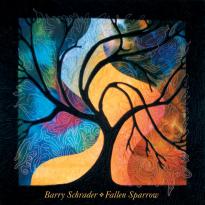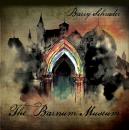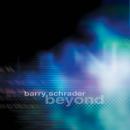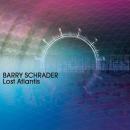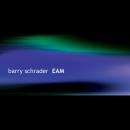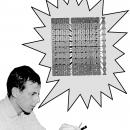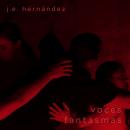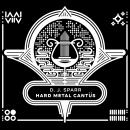Fallen Sparrow
Fallen Sparrow
Valencia, CA
| Fallen SparrowiTunes Artist's PageiTunes Album Page | |||
|---|---|---|---|
| Song Title | Time | Price | |
| 1. | Love, In Memoriam: No. 1. L'Oreille coupee (Severed Ear) | 02:51 | $0.99 |
| 2. | Love, In Memoriam: No. 2. Marmelade d'oranges (Orange Marmalade) | 03:12 | $0.99 |
| 3. | Love, In Memoriam: No. 3. Une histoire de portrait (The Portrait's Story) | 03:39 | $0.99 |
| 4. | Fallen Sparrow | 19:52 | |
| 5. | 5 Arabesques: Arabesque No. 1 | 01:46 | $0.99 |
| 6. | 5 Arabesques: Arabesque No. 2 | 01:23 | $0.99 |
| 7. | 5 Arabesques: Arabesque No. 3 | 01:27 | $0.99 |
| 8. | 5 Arabesques: Arabesque No. 4 | 02:06 | $0.99 |
| 9. | 5 Arabesques: Arabesque No. 5 | 03:30 | $0.99 |
| 10. | Ravel | 15:30 | |
"Fallen Sparrow" is the latest in a series of Innova releases by the seminal electro-acoustic composer Barry Schrader, and the first to duo live performers with electronic sound. His affinity for glistening soundscapes, coupled with virtuoso performances from some of the most acclaimed instrumentalists in new music cast an hour’s worth of pure music magic.
Schrader is not the first composer in the history of music to seek a balance between melody and accompaniment. But he has certainly found a unique equilibrium between the live soloists (all stars in their own right) and the prerecorded electronic parts. You’d swear they were sensing each other’s presence and responding accordingly.
Schrader evidently has some attraction to things French, and that’s evident on this CD. There’s French poetry, an expressive French countertenor, tributes to Ravel, and even a bit of tragedy. But there’s also a lot of upbeat nature to the music, including jazz influences and a swinging clarinet. The title "Fallen Sparrow", however, refers not to the late Edith Piaf, but to a dead bird found near the composer’s dryer exhaust outside of his house. What was the bird’s instinct to seek comfort in a pile of lint? Did its life flash before its eyes as it lay dying?
TOKAFI
There is a “gramophone magazine” quote on Barry Schrader, which might seem a bit odd at first: “Schrader’s electro-acoustic music appeals to both the ear and the mind.” What’s so strange about this is that a critic should mention it – after all, isn’t that what almost every composer sets out to do? In Barry’s case, however, it is definitely worth an exclamation mark, if only for the manyfold prejudices (or sheer ignorance) against the genre he is operating in. And besides, as “Lost Atlantis” proves, every single word of it is true. This is one of the releases, which are not just mere byproducts of market economy, but actually a lot more than their simple packaging suggests. “Lost Atlantis” collects two early works, brings in film music composer/sound engineer and self-proclaimed Schrader-fan Gary Chang for some masterful remastering and adds some highly informartive liner notes in the extensive booklet. As Chang points out, he was there in 1976, when “Trinity” was premiered live at the Vanguard Theater and totally blown away by its combination of pride in its purely electronics nature and yet deeply-rooted connection with the (post-)romantic masters of the past, such as Mahler or Bruckner. For a long time, the only available copy was a tape handed to Chang by Barry himself, which naturally wore out over the years. In the decades which followed, Schrader was as active as ever and it can only be put down to an apparent distaste for self-promotion and marketing mechanisms (which he shares with a few of hgis generational colleagues, such as Richard Lainhart) that it has taken so long for this music to be published. Still today, the kaleidoscopically swirling whirlwind, arranged in a rondo form and ceaselessly permutating, tramsforming, mutating and juxtaposing within itself has lost nothing of its immediate appeal. The same goes for the almost fourty minute long, seven-part title track. Here, the nuances of Schrader’s language become even clearer: Romantic, but always slightly opaque visions sway between major and minor, concrete and abstract as well as between sound and structure, rise from silence to frenzied outbursts and pandemonious sequences of lightning-speed tremolos and arpeggios. There is constant flux between the beautiful and the brazen, the delicate and the dirty, the feminine and the muscular and it is this endless interplay which lends a decided dramaturgy and dynamic to his works. Gramophone goes on to write: “[It is] approachable electronic music with a distinctive individual voice to reward the adventurous.” That, too, is true. There is even a sense of overt emotionality, untypical yet highly refreshing for the often pretty scientific electronic scene. To complete the quote from the very beginning: Schrader’s music pleases the ear, the mind and the heart.
by Tobias Fischer
TOKAFI
Barry Schrader is a composer who likes to get right to it. While some of his colleagues have made it an art moulding everything into metaphors, hiding behind the “beauty” of their aural clouds or behind the usual “space” connotations of their analog electronic equipment, Schrader neither has an interest in the supposed poetical qualities of beating about the bush, nor in leaving earth. If he does touch upon metaphysical questions, then they hold a direct link with human existence– such as on “Beyond”. Separated into two blocks of almost exactly 28 minutes, this collection of six fairly recent tracks composed between 1992 and 2004 deals with death, its different forms and the stages leading towards it. “First Spring”, a programmatic offshoot from the “Fallen Sparrow” sessions, portrays the imagined last thoughts of a dying bird, returning to the miraculous and slowly unfolding fields of its youth, while “Beyond” depicts the unknown in more general terms, as a landscape outside of our direct reach. In these pieces, Schrader is clearly still on the tonal side of things – his bubbling, glistening, glittering, breathing, menacing, whispering and threatening sounds clearly relating to each other in harmonic terms, even though he isolates them into dissected islands which thwarts the notion of chord scheme development and blurrs the listener’s sense of time. Death, here, is a frightening place, yet you can always feel its strange lure, just like you are drawn into the deep when gazing from a high building and the way “Beyond” quietens down after a full-force-opening conjurs up images of candles being blown out by motionless winds. On the demonstratively entitled tripart “Death”, however, nothing remains from this still human perspective. The music stripps off form and structures start disintegrating. “Before Death”, the first movement, consists of long-drawn breaths of greyish colour, shifting inside, approaching yet resting in themselves. They condense into thick packs of sighed drones in the second part, giving birth to the metamorphic rock of “After Death”, a trip of intense majesty and nebulous infinity against which the soundscapes of the “Dark Ambient” scene seem like Disney Land excursions. Of course, Schrader doesn’t offer any direct answers. He knows all too well that there are hints at what to expect when life converges towards its end, but nothing the material world would call “solid evidence”. What he has realised, though, is that music may offer a quicker glimpse behind the curtain than words. “The fate of everything is nothing, and in nothing is everything.”, the liner notes read, “And then there was silence”. Which is why you have to stay wide awake until the very end – it is the moment when the music’s over which conceals a glimpse of the solution.
by Tobias Fischer
TOKAFI
The act of hearing is closely connected to different layers of meaning embedded in music. Consciously or unconsciously, our perceptive organs are looking for connections, for references – in short, for a system. Barry Schrader picks up on this when talking about “Fallen Sparrow”, a collection of four complementary compositions, each of them a collaboration with a different instrumentalist. In accordance with Leonard Meyer, he distinguishes between embodied meaning (the mutual relations between the constituent musical elements) and designative meaning (the intellectual or emotional programs of a piece). His aim, and this may distinguish him among many of his colleagues, is that however intricate the emobodied meaning may be and how cleverly or skilfully its themes may have been constructed, “the music must stand on its own apart from these technical and compositional considerations.” The underlying “theoretical” quality is, however, closely connected to the programmatic and emotive values – and Schrader uses it to open up different spaces of appreciation. Which means that it is not necessary to be a musicologist in order to get something out of this album but it definitely enriches the experience. There are references and tributes abound and not all of them are as obvious as the piece by the name of “Ravel” – even though, of course, this work lends itself nicely to such investigations, thanks to its allusions to the French composer’s “Le tombeau de Couperin”, the “Piano Concerto in G”, “La Valse” and “Daphnis et Chloe”. On most occasions, the embodied meaning takes the form of self-reference, of a motive serving as s source for variations, transcriptions and for binding the separate tracks on the CD together: Very subtly, but quite purposely, all of the tracks here relate to each another. Designative meanings are prominent on the title piece (a dark fantasy for electronics and violin, based on discovering the nest of a dead bird ) as well as the opening “Love, in Memoriam”. The latter piece is made up of three Lieder for discrete synthesizer arrangements and Frank Royon Le Mee’s supple countertenor, touching upon the lives of Vincent van Gogh, Leonardo da Vinci and Lewis Carroll with lines as unambigous as “My severed ear weighs heavy in your hands/your painful words making the days more unbearable.” There is however, a third meaning contained here and it may well be the most obvious one on a first listen and without the liner notes at hand. Already on the previous release I had the pleasure to review (“EAM”), Barry Schrader discussed his interest in timbre as a factor of musical development. On “Fallen Sparrow”, it has very much attained that status. Sound as such has become both a driving force as well as a source of meaning in itself: It accompanies the lyrics with precise strokes on “Love, In Memoriam”, provides sharp contrasts with the lyrically organic lines of the clarinet on “Five Arabesques” and charges between complimentary emulation and direct opposition in “Ravel”. On “Fallen Sparrow” (the piece), meanwhile, the embodied, designative and timbral meaning come together in perfect unison, the violin melody moves from agitated death cries to warm acceptance as the work deals with the four final stages of the bird’s life and the sounds fill in the unspoken gaps, the metaphysical implications, the silence. Just as much as there are musical themes envelopping the entire record, the sound world Schrader has created is tightly defined and recognisable. It certainly had to be with regards to the symbiosis between organic and electronic instruments in all the tracks contained here. This last point opens up another angle from which to regard “Fallen Sparrow”, namely as a destillation of highly personal human relationships, of finding the right partner for a music which requires experience, expertise and a pronounced sensitivity for the nuances that lie in playing with an “invisible orchestra”. “Through all of this journey”, Schrader concludes in the booklet, “there is a variety of musical means and intent that I hope will keep the listener engaged.” He might just as well have written: A variety of musical meanings.
by Tobias Fischer
NEW MUSIC TBD OF LOS ANGELES
Barry Schrader's "Five Arabesques" (1999) is a set of musical miniatures set to electro-acoustic backgrounds with an impressive range of settings from rhythmic and syncopated to shimmering/ fluttering, etherial, groove-like and a sort of rondo form at the end with an orchestral theme surrounding separate sections of playfulness, flourishes, and contemplation, all executed with rich and juicy sonic textures.
by Dan Krimm
ALL MUSIC GUIDE
Fallen Sparrow presents four of Barry Schrader's works composed between 1989 and 2005. The common thread: they are all mixed works for electronics and live performers. Up first is the triptych "Love, In Memoriam," by and large the most interesting piece on this album. A short song cycle, it features tenor Frank Royon Le Mée interpreting three poems by Michaël Glück (in French, with an English translation provided in the booklet). The first and last of the songs are simply wonderful, especially "L'Oreille Coupée," in which the plaintive melody is accompanied by two rushed-up piano parts, creating a gripping sense of madness. In comparison, the 20-minute title piece simply sounds too dry. This seven-part suite offers a rather uninvolving electronic part for violinist Mark Menzies to duet with. Despite good passages, it fails to leave a lasting impression. "Five Arabesques," with clarinetist William Powell, is bolder and better, thanks to musical figures that are both clever and catchy. Vicki Ray is at the piano for the concluding "Ravel," which features the highest level of electronics/instrumentalist integration of the set. In the course of its 15 minutes, the piece goes through several mood swings, from cyclical motives to brooding chords and quirky clusters, all closely intertwined with the computer part, which remains very tonal throughout. Past the first few minutes, the intensity hits a peak and stays there, stealing the listener's attention and not letting go. But it does not have the emotional charge of "Love, In Memoriam," the main reason to buy Fallen Sparrow to be sure.
by Francois Couture
